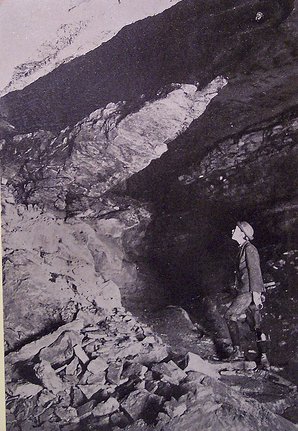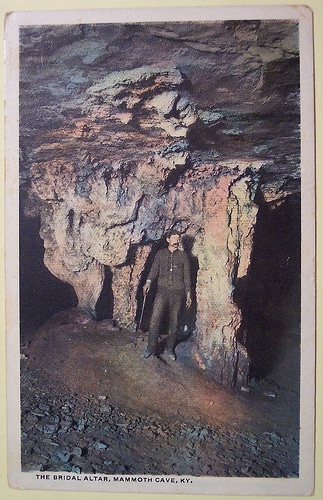
Editor’s note: This is a guest post from Pete Zefo.
Men have an innate need to explore. As boys we wanted to know what was behind those woods, over that hill, or on the other side of that lake. Some of us imagined ourselves sailing with Magellan, climbing with Hillary, or stepping out of the Apollo 11 with Armstrong. Today we are left with few options of unexplored territory. The world’s greatest mountains have been conquered. The depths of the oceans have been reached. Flying into space is not available to the common man. Everywhere else can be seen via Google Earth. Caving remains one of the best options for the individual to set his foot where no other man has been and no satellite can see.
My Introduction to Caves
I was first introduced to caves while going to college in Southeast Tennessee. One cannot travel far along I-75 without seeing signs for The Lost Sea or Ruby Falls. I was fascinated and disappointed with both of these tourist attractions. I could not help but appreciate the beauty that these caves offered, yet I knew there was a whole new world waiting beyond where our tour guides would allow us to go. It would not be long before I was introduced to a man who had personally mapped nearly seven miles of a wild North Georgia cave. When Hubert Crowell offered me the chance to join him on a cave trip, I jumped at the opportunity. As I stood looking down into the entrance of Pettyjohns Cave in Lafayette, GA, I knew this was the “beyond†I was looking for.

Getting Started
The beauty of caving is that it does not require a great deal of equipment or training to get started. Once you have made the initial investment in gear, you can go on to enjoy a relatively inexpensive pastime.
Physically, as with most outdoor activities, the better shape you are in the more you will get out of caving. But, you do not have to be ready to scale the Matterhorn to begin enjoying underground exploration. A typical cave trip will consist of walking on uneven terrain, crawling (and squeezing) through low passageways or tunnels, and climbing up or down into whatever rooms the cave may feature. A good four to five hour trip has the potential to work every major muscle group in your body.
Equipment
Two pieces of equipment are absolutely essential before you enter the cave. The first, and most obvious, is a good light source. Most hardware stores and sporting good outlets sell headlamps with an elastic strap. There are usually several styles to choose from depending on how much you want to spend. You should be able to find a good headlamp for $25 – $35. You do not need to illuminate the entire cave, and you will be surprised at how quickly your eyes adjust once you are underground. But, be sure to have extra batteries and at least two additional sources of light for backup: additional headlamps, handheld flashlights, or even candles.
The second piece of essential equipment is a good helmet. Look, caves can be dangerous. They are often wet and muddy, and you can slip easily. If you are in a tight place, it is easy to turn the wrong way and hit your head. You have a couple of options here. If you are just starting out, go the cheap route and pick up a construction helmet with a chin strap at your local hardware store. Get some duct tape to attach your head lamp. Once you have decided that caving is something you want to continue doing, buy a good climbing helmet such as a Black Diamond or Petzl, most of which will have attachments for your headlamp.
Additional equipment depends on what you desire to do in the cave. If you are entering a vertical cave where you will be descending several hundred feet, you will need rope, harnesses, ascenders, carabiners and other necessary climbing gear. If you have the desire to begin surveying and mapping your cave routes and discoveries, you will need a compass, clinometer (measures inclination), and a laser range-finder.

Supplies
In addition to your essential equipment, a few supplies you will want to bring include the following:
- A small backpack which can be easily removed when crawling through tight spaces
- Bottled water or a “camel packâ€
- Gloves, knee and elbow pads
- Granola or protein bars, beef jerky, or other food items that will not get crushed (I have a friend who brought Little Debbie snacks. Not a good idea!)
- Matches, batteries, extra duct tape, small first-aid kit, etc.
- A camera with a flash
- A large zip-lock bag for human waste (really!)
- A complete change of clothes waiting for you in your car
Safety
There are 52 ways to die while caving, but it is generally safe if you follow a few guidelines. First, never go caving alone. In fact, a good group size is four to six people. If an accident occurs on your trip this allows one person to remain with the injured party and at least two others to go for help. Groups larger than six tend to get slowed down in congested passageways. It is also a good idea to know a telephone number for the county fire department. Many counties that feature wild caves will have a local Cave Search and Rescue team.
If you happen to get stuck in a tight crawl do not panic. When you panic your lungs fill with air, expanding your chest, making it more difficult or impossible to move. You have to control your breathing and exhale as you gain those precious few inches that will eventually release you from the squeeze. For most men, if you can get your shoulders and chest through a hole, the rest of your body should make it through. However, do not take unnecessary risks and always send the smallest guy through first.
Be sure that someone outside of the cave knows your plans. If you are entering a previously mapped cave write out your planned route and destination. If you are exploring virgin territory be obsessively observant, looking behind you every few feet and memorizing rock formations so you can guide your team out.
Caving is a physically strenuous activity. Maintain at least three points of contact with the cave as you are traversing uneven terrain. Do not exert yourself beyond your limits. However far you travel into a cave is as far as you have to travel out.
Most cave accidents are due to errors in judgment, but be aware of other hazards such as hypothermia, flooded passages, falling rocks, trusting worn-out ropes and poor footing.
Be a Responsible Caver
The caver’s motto is “Take nothing but pictures, leave nothing but footprints, and kill nothing but time.†I am not saying that you have to join Green Peace, but please treat the cave with some respect. Many of the formations you find in caves have taken thousands of years to develop. A careless nudge can destroy them in an instant. Do not use chalk or spray paint to write “This way out†or other directions on the cave walls. Carry out your own trash, and leave the bats alone. If you really begin to fall in love with the sport, I would suggest joining the National Speleological Society where you can learn more about cave conservation.
Oh….and do not call it “Spelunkingâ€
This might sound a bit pretentious. But, if you want to be taken seriously as a caver, avoid the words “spelunking†and “spelunker†at all costs. Using the word “spelunking†is the equivalent of asking how many points a team scored in a baseball game. Technically, it works, but it immediately marks you as a novice. Think of it this way: “spelunk†is the sound someone makes when they fall through a hole and land in a puddle.
Get Out There
Are you ready to start caving? Locate caves in your area by going to www.caves.org and contacting a local grotto (caving club). Most grottoes plan monthly cave trips which provide responsible guides as you become acquainted with caving. Many National Park caves, such as Mammoth Cave National Park in Kentucky, offer “wild cave trips†beyond the normal tourist routes. Be safe and enjoy exploring!
Resources
Jenkins, Mark. “Deep Southern Caves.†National Geographic. June 2009. Vol. 215. No. 6. 124 – 141.
Middleton, John and Tony Waltham. The Underground Atlas: A Gazetter of the World’s Cave Regions. St. Martin’s Press: New York, 1986.
Taylor, Michael Ray. Cave Passages: Roaming the Underground Wilderness. Scribner: New York, 1996.
www.caves.org (National Speleological Society)
www.hucosystems.com (Cave Mapping Software)


